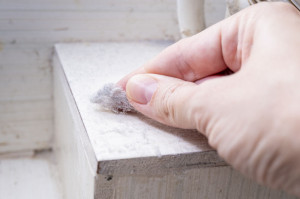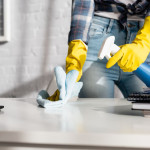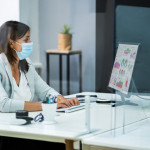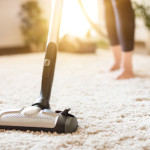 Dust is everywhere. It’s on your end table, your bookshelves, under the bed, in the carpet, and the curtains. At home, it’s easy to fight back with weekly chores and regular dusting. But what about at the office? What dust bunny horrors await if you pull your desk or printer out?
Dust is everywhere. It’s on your end table, your bookshelves, under the bed, in the carpet, and the curtains. At home, it’s easy to fight back with weekly chores and regular dusting. But what about at the office? What dust bunny horrors await if you pull your desk or printer out?
Dust accumulates everywhere, no matter how much we try to avoid it. We all know that dust is bits of old skin, fabrics, and other materials just hanging in the air, but there is more to dust than that. Here are 10 things you probably don’t know about dust.
- Dust particles soak up contaminants. It’s not just old skin cells in the air. Everything you spray, use or track into the home ends up in your household dust.
- Dust accumulates over time. No matter how often you clean, dust builds up in every nook and cranny of space.
- Dust can contain chemicals that are decades old. Legacy pollutants can accumulate in the dust, especially in older buildings. It’s not uncommon to find banned substances like DDT in dust particles of old spaces.
- Dust can be a source of pollutant exposure, and kids are especially susceptible. Anyone who spends a great deal of time indoors (like kids) is exposed to many pollutants present in dust. This can be especially true in workplaces where industrial chemicals and other hazardous materials are used.
- Dust can collect carcinogens. Recent studies have found carcinogenic compounds once used in older building materials such as electrical cables, vinyl flooring, and wood finishes in dust particles.
- We all create our own ‘dust cloud’ that follows us and contains particles of everything we touch and use. The particles can be shared on other surfaces or absorbed through our skin.
- Research shows that dust can be a significant source of exposure to endocrine-disrupting chemicals. These chemicals may affect hormone balances, fertility, reproductive health, or even cause cancer.
- One of the best ways to avoid redistributing dust particles while cleaning is to use a vacuum that contains a HEPA filter. Otherwise, you’re mostly circulating dust particles in the room.
- Carpets are full of dust. Carpets are a huge source of dust particles and need to be deep cleaned each year to avoid long-term build-up, dust, and pollutants.
- Dust hurts plants. A thin layer of dust on a plant actually blocks sunlight and harms plant growth. Cleaning your plants with pressurized air before wiping the dust off is the best way to keep plants healthy and clean.
Everywhere we go, dust follows us. Everything we go through, touch, or use gets into the dust particles around us. That’s why proper dust cleaning and sanitation practices are so essential for your health and the health of your employees and customers. Make dusting a regular part of your office cleaning, or let our experienced cleaning team take care of it for you.








